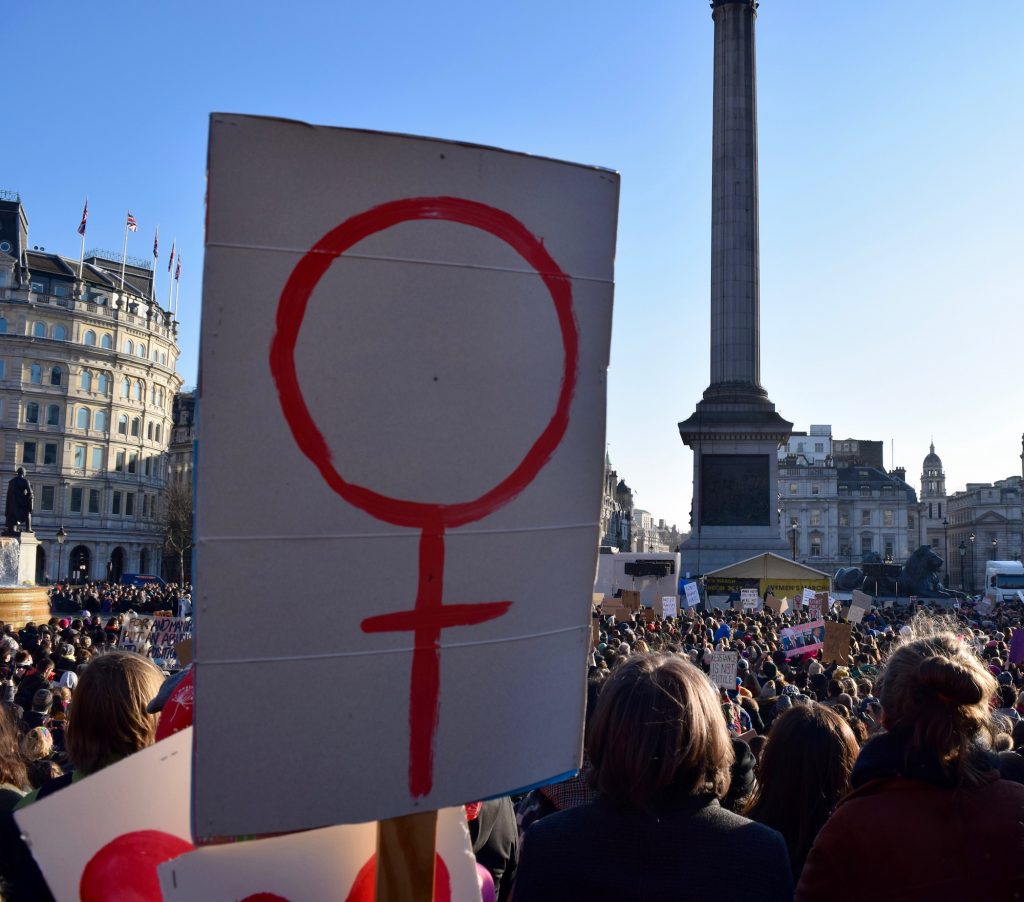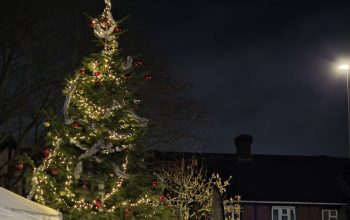
An estimated 100,000 people participated in the Women’s March on London on Saturday 21 January — more than five times the 15,000 turnout expected by event organisers.
The event, which began with a two-mile march from the U.S. Embassy in Grosvenor Square and ended with a rally in Trafalgar Square, aimed to shed light on a range of issues, including gender equality, LGBTQ rights, the protection of refugees and equal access to education.
Emcee Sandi Toksvig, writer, presenter and joint founder of the Women’s Equality Party, tried her best to sum up the event’s inclusivity.
“I’m here because I’m gay, because I’m Jewish, because I’m Muslim, because I’m differently abled, I’m trans, I’m tall, I’m short, I’m white, I’m black, I’m rich, I’m poor — oh, pick a thing,” she said to the crowd.
Police ended the rally 30 minutes early because the extra-large crowd spilled out from Trafalgar Square and onto nearby streets, causing safety concerns and blocking traffic.
Still, the rally lasted about an hour, and speakers included MP Yvette Cooper, comedian Sajeela Kershi and Sherlock actress and Women’s Equality Party ambassador Tanya Moodie.
Moodie said in her speech: “Today, you have rejected the rhetoric of division and hate and the rise of xenophobia in this country and around the world.
“But there is so much work to do.”
A Kingston Connection
Kingston University Masters student Julien Crésus, 21, attended the march after hearing about it two weeks ago and said he did so in honour of the women in his life.
“I have four sisters and I really wanted to be there as a feminist brother,” he said.
Originally from Paris, France, Crésus had marched once before in his hometown after a wave of terrorist attacks in January 2015.
In both instances, he said he marched for a better world.
He said: “I went to the Paris march, and everyone was singing ‘Imagine’ by John Lennon and mourning those lost in the attacks.
“The march to Trafalgar Square, seeing so many people for the same cause, singing, dancing — it was a lovely march and there was no anger.”
He left the march hoping only that the high turnout would have a lasting impression.
He said: “I know it’s just a march, but maybe if we have enough of them we can have equal rights, equal pay, make women safer in the streets.
“And it was so inspiring to see so many people marching all over the world, marching together.”
The Wider Movement
The Women’s March on London was just one of the more than 700 scheduled marches in 70 countries around the world, according to event organisers.
In fact, the movement touched every continent, with marches in places as far-flung as the Azores, Madagascar and on the Antarctic Peninsula.
The Women’s March on Washington, D.C., inspired the rest of the marches and was envisioned as a way to give a voice to women, Muslims, the LGBTQ community, people with disabilities and other minority groups targeted by the rhetoric of the 2016 U.S. election cycle.
London’s crowd was one of the ten largest in the world, according to estimates gathered on 22 January.

Many politicians took to social media to voice their support for the march, while others, including London mayor Sadiq Khan, attended the rallies themselves.
U.S. President Donald Trump, meanwhile, tweeted that he “watched the protests … but was under the impression that [the U.S.] just had an election.”
He added in another tweet that protests are a “hallmark” of a democracy.
He said: “Even if I don’t always agree, I recognise the rights of people to express their views.”




